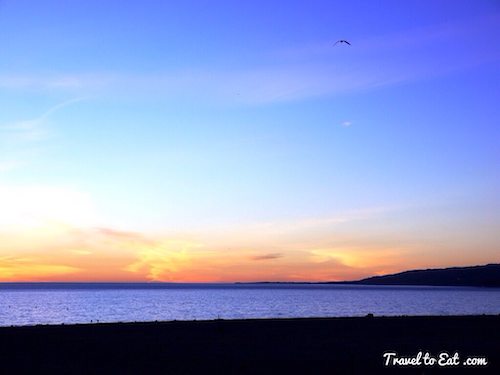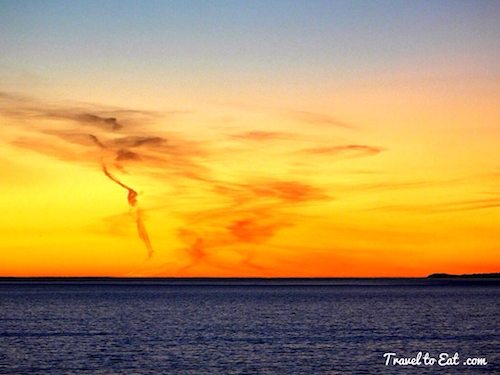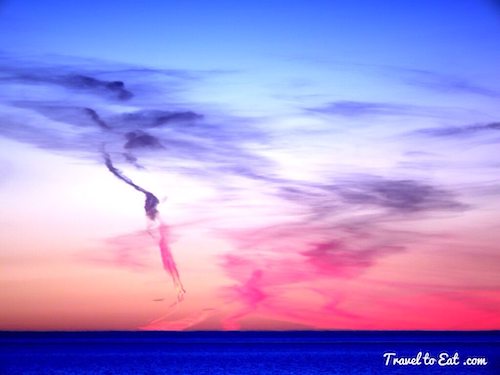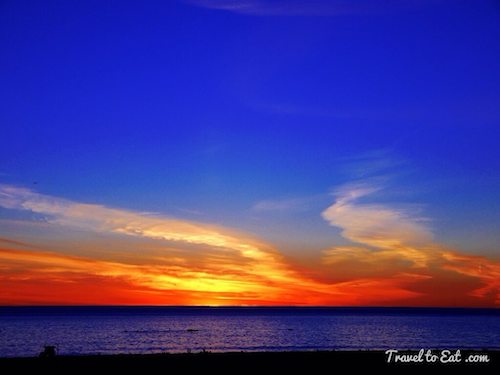
I watched a couple of sunsets when we were in Santa Monica and took a bunch of pictures. I thought I would share the pictures here. I have been trying out the digital filters on my Lumix G5. I got the rich blue sky with a polarizing filter, I pushed the blue a little far but it is an interesting photo, I particularly like the black forms along the waters edge.
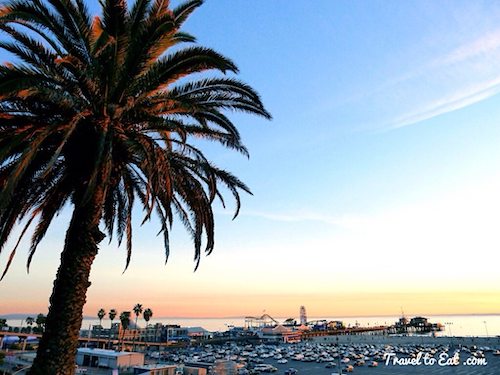
In 1909, the famous Santa Monica Pier, now the oldest pleasure pier on the West Coast, was opened attracting thousands of curious visitors. The long, narrow Municipal Pier opened September 9, 1909, primarily to carry sewer pipes beyond the breakers, and had no amenities. The short, wide adjoining Pleasure Pier to the south, known as the Newcomb Pier, was built in 1916 by Charles Looff and his son Arthur, amusement park pioneers. Looff is renowned for innovating a noteworthy style of carousel horse. The moving horses were slender and graceful and inferred motion. The manes featured “cut through” openings, which looked dramatic, but were very time consuming to carve. Around 1905, Looff designed a saddle that resembled a scoop, a design that is still found on carousel horses today. Originator of the Coney Island-style carousel, he opened a shop in Brooklyn and shortly thereafter produced his second carousel, which was installed at Coney Island. This picture was processed on the G5 with a digital filter, Impressive Art.
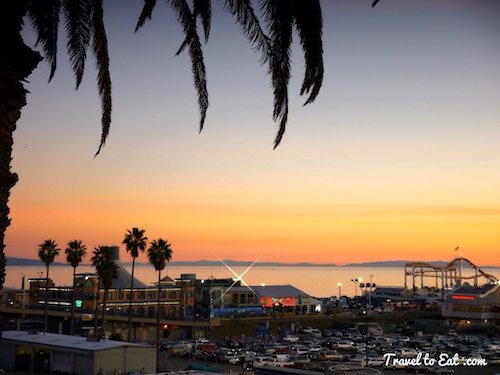
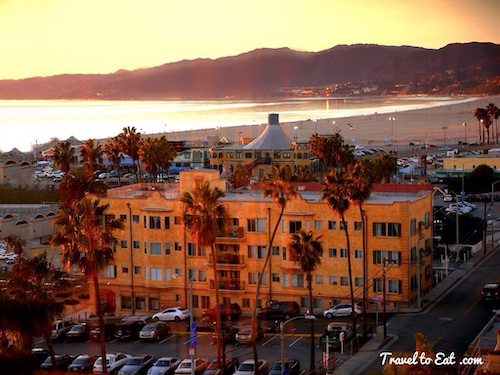
The Looff hippodrome is a national landmark structure that might best be described as “a California-Byzantine-Moorish-style fantasy” that sits at the shore end of Santa Monica Pier. It can be seen above as the two story building to the left with the inverted “funnel on top”. It was designed and built in 1916 by Charles Looff and his son Arthur to hold a Looff Carousel. This unique structure has been home to a succession of vintage merry-go-rounds and Wurlitzer organs. Back in the early days, the hippodrome was accompanied by the Blue Streak Racer wooden roller coaster and the Whip and Aeroscope thrill rides. I used a digital star filter for this.
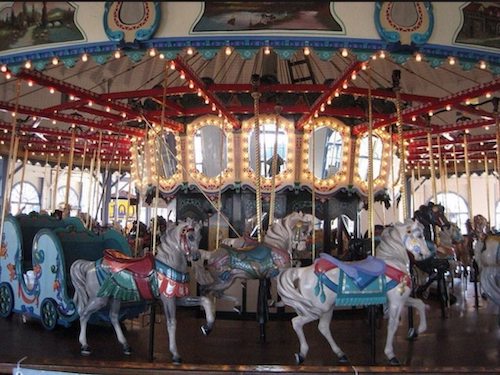
Records do not indicate what happened to Looff’s merry-go-round which was installed in the hippodrome. We do know that it was replaced by one from the old Ocean Park Pier in 1939. The current merry-go-round was built by the Philadelphia Toboggan Company in 1922, its original home was Nashville, Tennessee. The carousel arrived on the West Coast before World War II and in 1947 it was moved from Venice pier to the Santa Monica pier. It has been owned since 1977 by the City of Santa Monica. The 44 original hand-carved and painted wooden horses were restored in 1981-1984. It was rebuilt in 1990 inside the Looff Hippodrome. A calliope provides musical accompaniment.
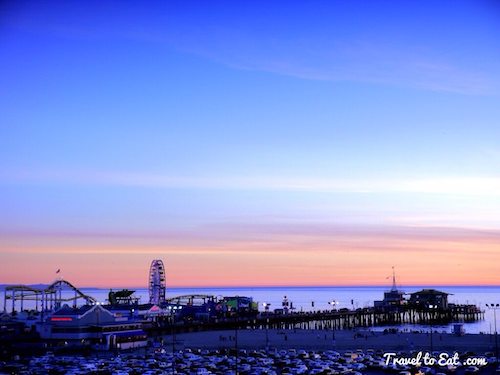
The La Monica Ballroom, designed by T.H. Eslick with a Spanish façade and French Renaissance interior, opened on July 23, 1924. It was the largest dance hall on the west coast, accommodating 5,000 dancers on its 15,000-square-foot (1,400 m2) hard maple floor. From 1958 until 1962 the ballroom served as a roller skating rink; first as Skater’s Ballroom and then Santa Monica Roller Rink, where the speed skating club won many state and regional championships. The La Monica Ballroom was demolished in 1963.
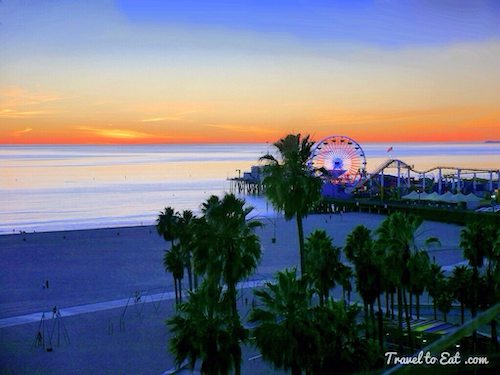
Walter Newcomb had been managing the Pier’s operation for years and finally bought the pier from the Looff family in 1943 and the Looff Amusement Pier became the Newcomb pier. In the 1950s, the Gordon family took over the arcade games on the pier, upon the suggestion of Enid Newcomb. At present, the Gordon family still manages the Playland Arcade, the Pier’s longest running business offering modern amusements of today like video games and air hockey along with the popular games of yesteryear like skee-ball and the shooting gallery.
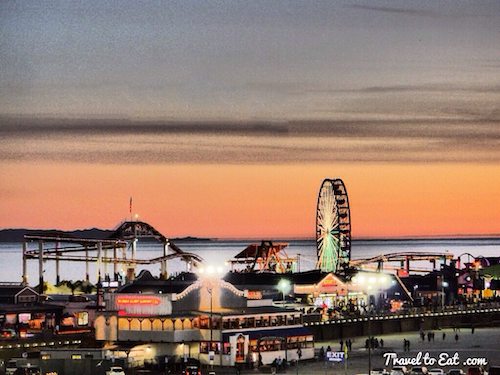
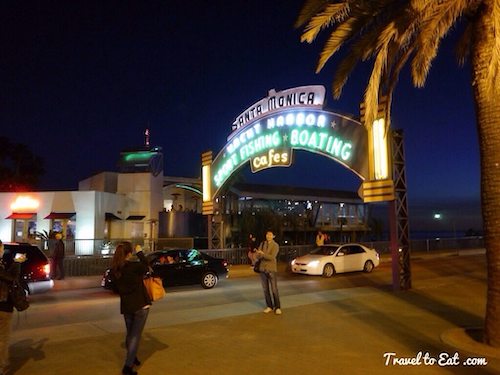
The famous neon sign at the entrance to the pier was installed in 1940 and since then it has been the icon for Santa Monica City. The sign was erected by the Santa Monica Pier Businessmen’s Association to celebrate the opening of the newly built concrete ramp. Though the sign says “Yacht Harbor,” there hasn’t been a boat moored at the pier for over 40 years. The sign reflects what the pier was at the time it was installed and is cherished by the citizens of Santa Monica.
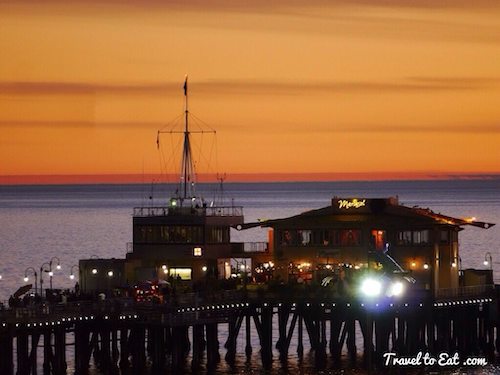
The end of the pier remains a popular fishing location where you can buy bait and supplies. I am going to end with a few more pictures of the lovely sunset.
